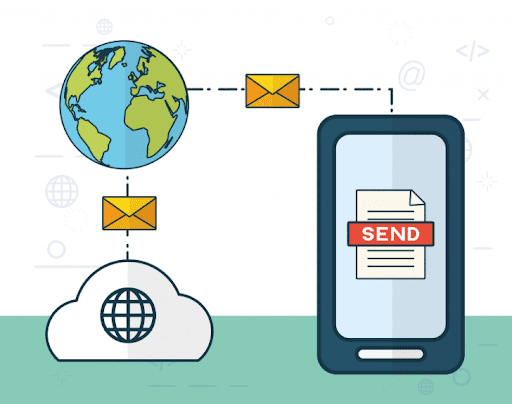SMS might feel like an “old school” channel in 2025, but in the real business world—where verification codes, bank alerts, and order updates still matter—it remains one of the most reliable communication tools. Email can sit unread forever. Push notifications get swiped away. But SMS? People open it. That’s why companies expanding across borders spend so much effort picking the right SMS gateway.
Different countries follow different rules. Some telecom operators throttle traffic, some block SIMs aggressively, and some require strange compliance steps that aren’t written anywhere obvious. Getting SMS to work globally isn’t magic—it’s engineering, experience, and good routing.
This list narrows down five global SMS gateway providers that actually perform well across countries in 2025.
Top 5 Global SMS Gateway Providers in 2025
Introduction — Why Global SMS Gateways Matter in 2025
In 2025, SMS is still the dependable workhorse of global communication. Cross-border businesses rely on it for OTP verification, delivery alerts, payment reminders, and promotional campaigns. The rise of multi-country eCommerce, fintech, global SaaS, and digital services has pushed SMS volume to new highs. Many companies even track daily OTP latency like they track revenue, because a five-second delay can seriously hurt sign-ups.
At the same time, global regulations have become far stricter.
A2P 10DLC registration in the U.S., DND rules in India, operator-level audits in the Middle East, and GDPR constraints in Europe all affect message delivery. And then there’s the not-so-glamorous reality: some operators silently block traffic if they detect “robotic sending behavior.” It’s messy, but that’s the real telecom world.
High delivery rates are no longer a “nice to have.” They are the competitive edge.
Choosing a stable supplier early can drastically reduce message failures, unexpected delays, and unnecessary troubleshooting costs later.
A Global SMS Gateway is the platform or hardware that helps businesses send messages worldwide.
Typical functions include API access, delivery reporting, routing logic, dual-channel fallback, SIM rotation, SMPP handling, and in some cases voice or proxy features.
How We Ranked the Top 5 Providers
To keep this list usable and not overly academic, providers are evaluated based on six practical criteria:
1. Global Network Coverage
How many countries can the provider truly route traffic to, and not just on paper.
2. Delivery Rate & Speed
How stable is throughput during peak hours and heavy campaigns.
3. Compliance & Local Regulations
Can the provider handle regional policies like A2P, DLT, GDPR, etc.
4. SMS API Stability & Developer Support
Developers need intuitive API structures, clean documentation, and quick debugging.
5. Cost Level
Not the cheapest, but the most reasonable for the performance delivered.
6. Extra Channels
Support for WhatsApp, RCS, Voice, or even multi-IP proxy routing.
Top 5 Global SMS Gateway Providers in 2025
1. Skyline — The Most Complete End-to-End SMS Gateway Ecosystem
Skyline stands out not because of marketing polish but because of execution.
The brand has been active in telecom for more than 18 years, working with hundreds of operators worldwide and shipping SMS/voice equipment that actually holds up under real loads.
Unlike many modern SaaS gateways that rely purely on API routing, Skyline offers full hardware + software integration through devices such as:
lSMS Gateways (up to 512 SIM cards)
l4-SIM Proxy WAN Routers
l4G/5G Multi-IP Proxy Gateways
l32/64/128-port SMS modem pools
lVoIP gateways with 4–32 SIM per port
lSIM behavior and anti-blocking features
lSMPP + HTTP APIs with real-time stats
The SMS gateway units can reach 5,440 SMS per minute, which is astonishingly high for hardware-based systems.

Coverage & Features
Skyline’s systems operate in countries such as Australia, India, the United States, the UK, and across Europe. Modules support 2G/3G/4G/5G frequencies from 700 to 2600 MHz, chosen based on each country’s telecom band requirements.
Key abilities include:
lHuman-behavior sending logic
lSIM rotation to avoid blocking
lRealtime SMS receiving
lAPI routing customization
lRemote device management (ETMS/EIMS/ESPS)
lIMEI modification
lVoice+SMS hybrid support
lMulti-IP proxy routing
These aren’t theoretical specs; they’re repeatedly used in Skyline’s business cases, where customers scaled from a single device to fleets of 20 or even 30+ devices.
Strengths
lFull hardware ecosystem for enterprise-grade SMS
lStrong stability in hot climates and high-load conditions
l24/7 engineer support and onboarding help
lReal customer cases showing long-term profitability
lSuitable for marketing SMS, verification codes, proxy operations, and call centers
Limitations
Skyline relies on physical hardware, so initial setup includes SIM cards, routing, and installation. Not an issue for businesses planning long-term operations, but lighter users may prefer pure SaaS models.
2. Link Messaging— Developer-Friendly Global API
Link is the closest fictional competitor to a developer-first SMS gateway.
Its platform focuses heavily on clean API design, quick onboarding, and transparent dashboards.
Global Coverage & Features
lCoverage in about 160 countries
lREST API with simple JSON structures
lSupports SMS, short-code OTP, and basic voice
lWebhooks for delivery status
lSandbox environment for testing
Strengths
lOne of the easiest APIs to work with
lVery consistent delivery in North America and Europe
lGood for SaaS startups needing fast integration
Limitations
lPricing tends to run a bit high for international routes
lSome regions require sender ID registration, which slows onboarding
3. Net Communications — Enterprise Messaging at Scale
Net is the enterprise-heavy platform on this list.
It focuses on high-volume throughput and compliance advisory services, appealing mainly to banks, insurance companies, and telecom resellers.
Network & Features
lCoverage in 180+ countries
lStrong throughput for A2P traffic
lIncludes WhatsApp Business API, RCS, email routing
lDedicated compliance team for DLT, GDPR, operator audits
Strengths
lExcellent stability during peak campaigns
lGood choice for companies sending millions of messages
lEnterprise onboarding with account managers
Limitations
lPricing is not publicly listed
lSmaller companies often find onboarding slow
4. Nord Messaging— Multi-Channel Platform for Europe
Nord is strong in Europe, particularly in markets with strict privacy laws.
Network & Capabilities
lSMS, WhatsApp, Instagram DM, and email
lAutomated flows using drag-and-drop builder
lLocal data centers inside EU for GDPR compliance
Strengths
lVery good for European businesses targeting local users
lMulti-channel campaigns are easy to build
lStrong data privacy protections
Limitations
lCoverage in Asia and Africa weaker
lThroughput slower than enterprise-level providers
5. Send Global — Cost-Effective SMS Routing
SendoraX focuses on economical SMS routing for startups and small to mid-sized companies.
Network & Features
lOperations in 120 countries
lBasic SMS + OTP + voice callback
lLow-cost plans
lLightweight routing system
Strengths
lVery affordable
lGood for moderate daily SMS loads
lAPI is easy to understand
Limitations
lNo WhatsApp or RCS
lNot meant for high-volume enterprise campaigns
Comparison Table — Top 5 SMS Gateways
| Provider | Countries | Avg Delivery Rate | 2-Way SMS | Price Level | API Quality | Extra Channels | Best For |
| Skyline | 200+ | Very high | Yes | $$ | Advanced | Voice, Proxy, Multi-SIM routing | Scaled SMS/voice operations |
| Link | 160 | High | Yes | $$$ | Excellent | Limited | SaaS, developer platforms |
| Net | 180+ | Very high | Yes | $$$$ | Enterprise | WhatsApp, RCS, Email | Banks, telecom, enterprise |
| Nord | 100+ | High | Yes | $$ | Good | Instagram, Email | EU-focused brands |
| Send | 120 | Medium | Limited | $ | Basic | None | Startups, light SMS users |
How to Choose the Right Global SMS Gateway in 2025
1. Identify target countries
Telecom rules differ wildly. Consider local SIM rules, sender ID policies, and operator filtering.
2. Clarify message type
OTP and verification messages need stable, low-latency routing.
Marketing campaigns need high throughput.
Notifications need consistency more than speed.
3. Compare pricing and volume needs
Some regions—like the Middle East—have high A2P costs.
Choosing by price alone often backfires.
4. Decide if multi-channel support matters
Not all brands support WhatsApp, RCS, or email.
If your user base prefers messaging apps, choose accordingly.
Conclusion — Choosing a Gateway That Supports Your Global Growth
In 2025, SMS remains essential for verification, security, logistics, and global customer engagement.
Each provider has its strengths:
lSkyline excels in hardware ecosystems, enterprise stability, and global SIM-based routing.
lAetherLink offers clean developer APIs.
lVeluraNet supports deep enterprise compliance.
lNordWave is strong in EU multi-channel messaging.
lSendoraX provides affordable routing for startups.
The ideal choice depends on your target markets, daily volume, compliance needs, and growth plans.
But for businesses requiring large-scale, stable SMS and voice operations with real traffic, Skyline stands out thanks to its multi-SIM hardware architecture, anti-blocking logic, and global operator relationships built over 18+ years. Read More about SMS Gateways ;Skyline
FAQs
Q1:Does Skyline support large-scale deployments for SMS and voice?
A:Yes. Skyline’s SMS gateways support up to 512 SIMs, and throughput can reach 5,440 SMS/min, suitable for large campaigns and long-term telecom operations.
Q2:Can Skyline help with cross-border compliance?
A:Skyline uses local-frequency modules, SIM behavior logic, and region-specific routing advice to help users maintain stable performance under different country policies, including strict markets like India, the Middle East, and Europe.
Q3:Is Skyline suitable for beginners?
A:Yes. Many users in Skyline’s internal case studies started with no telecom background, using just a single device and receiving direct engineering support, eventually scaling to multiple devices and even full businesses.





























